At this point in my career I have become interested in revisiting artist’s studios and musician’s practice spaces. Reflection, persistence, rejuvenation, and change-in-focus, tend to be recurring threads in these encounters. This week, the COMP Magazine took the Pink line down to Marshall Square (Little Village) to do a follow-up Q&A with Miguel Cortez. We’ve known each other for more than 20 years, we’re friends. One of the initial interviews for the COMP was done with Cortez in 2014. For more than a decade, Cortez ran the experimental art space Antena. There, one rarely knew what one would encounter prior to entering the environment. Cortez, in the early 2000s, created a platform for some of the most provocative and thoughtful shows in the city. As a handful of felines wondered his studio, we discussed his shift in aesthetic investigation, his attraction to the tactile and visceral processes of working abstractly, how age has posed new questions, and what he now values in his studio practice.
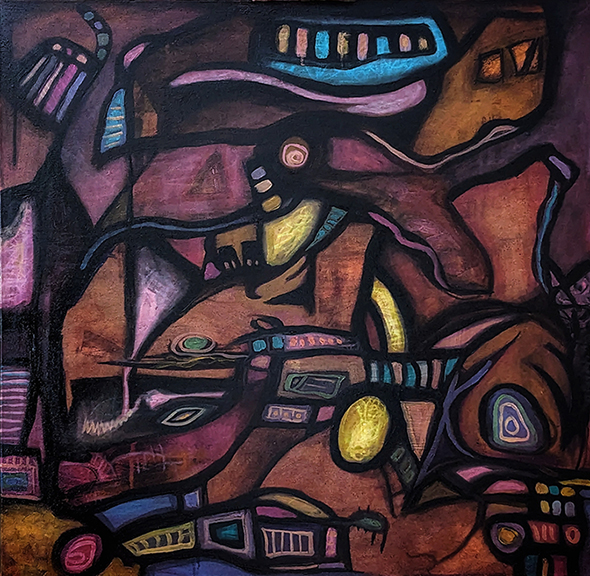
It’s been a minute. Wow, 2014, was when we worked together on a Q&A focused on your direction of the experimental new media space Antena in Pilsen. Can we start with a catchup? What’s been up over the past 9+ years?
Antena continued until the end of 2016 and then in 2017 I moved out of Pilsen and bought a building in Marshall Square/ Little Village. I wanted to buy property in Pilsen but that was beyond my price range.
When my family emigrated from Mexico we settled in Marshall Square in the late 70s and 80s, so I always loved the area and always wanted to live by the boulevard. I’ve come full circle and decided to make it my home again.
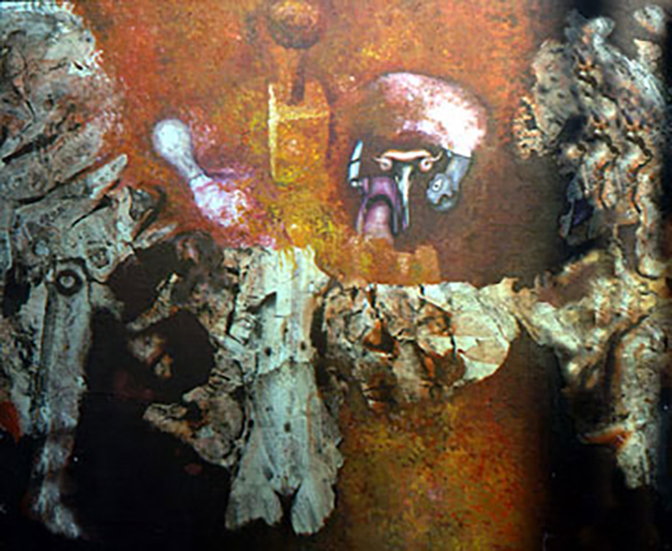
Can you discuss how you have shifted your attention to your studio practice? Previously, the focus was on new media time-based artworks, now you’ve turned to painting? What prompted this? Was there a need to reengage tactile aspects of your studio investigations?
Yes, for a while I was doing mostly digital new media /computer art and I then came to a point where I missed getting my hands dirty with paint and that physical aspect of art-making that I did so much of in the 1990s to the mid 2000s.
When I ran the gallery I focused more on that and whatever time left I did my new media work. Nowadays I focus more on myself but in the back of my mind I still want to open another art gallery… or if this metaverse takes off in a few years then I’ll open one in a virtual world.
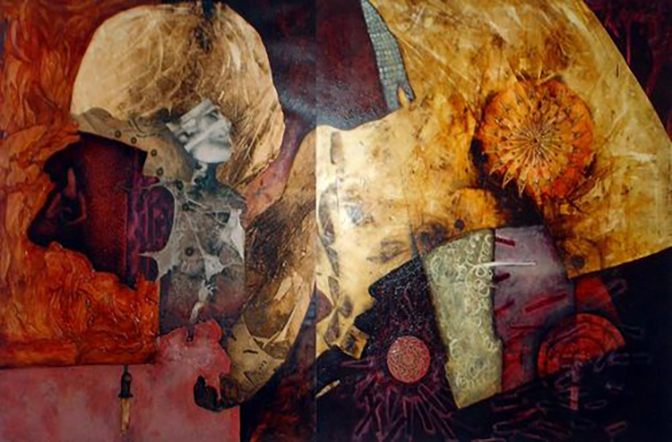
Much of the work you are making now is clearly abstract. There is a visceral spontaneity that is in the manner you are applying the paint. Upon initial inspection, I see this as a visual schematic that implies a stream-of-consciousness approach. What are you exploring?
Back in early 2020 at the beginning of the pandemic I was furloughed from my job so I had a lot more time on my hands. I wanted to revisit the act of painting, so I went to the art store and bought paints, brushes and canvas and started creating new work.
I usually start off with a blank canvas, put on my headphones, crank up the tunes and start adding preliminary shapes and colors in acrylic. Nothing is planned but it’s more of a record of what I’m feeling at the moment, or whatever my subconscious wants to let come out.
After a few layers, the shapes and colors evolve and the composition starts to take shape. I continue adding acrylic layers and once I’m happy with it then I switch to oils to do the rest. Lately I’ve been documenting my process through time lapse video that I then share on social media. So people see it from start to finish. Each painting takes months.
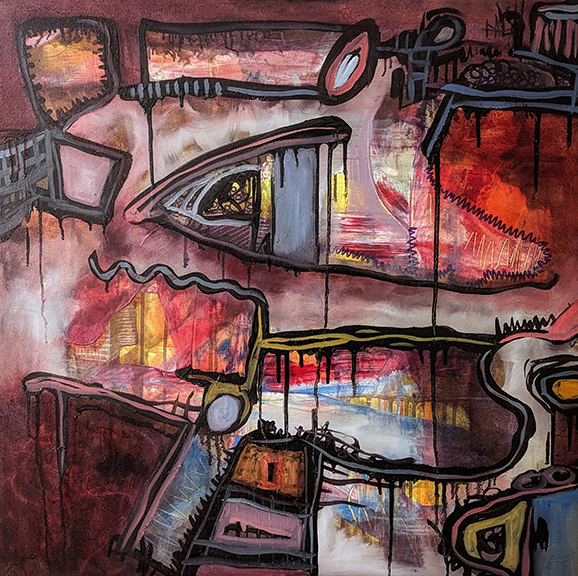
In conversation during or session, I brought up the artist Philip Guston. In the late 1960s after a establishing himself as of as an abstractionist there was a dramatic shift in the content and style of his paintings. I’m intrigued with artist’s making dramatic changes in their aesthetic practice. I’m curious if you could discuss how, you now think about the artmaking process in contrast to how you approached the artmaking process in your youth?
I do love Guston’s later work way better than his early abstraction. In my 20s I was all into Surrealism and Dada so that influenced that era of my work. I would start off by creating ink washes onto the canvas, letting the organic patterns/textures dry and then would use acrylic and oils to help shapes, faces or figures manifest.
The earliest painting that I still love and am proud of is “Premonition 5” from 1990. I used an earthy color palette and added some weird figures and an intonarumori, which was an experimental music instrument created by Italian Futurist Luigi Russolo. It’s been in a private collection since the 90s.
With some of my most recent work I’ve started to use A.I. as a starting point for ideas. There’s a website called Midjourney where you sign up to use their artificial intelligence bot and what it does is generate images based on the text that you type. So one day I typed in “abstract painting with dripping paint in the style of Franz Kline”and it generated several images. I liked one and used the composition to start a painting. My goal wasn’t to duplicate it but for it to be a spark in my new creation.
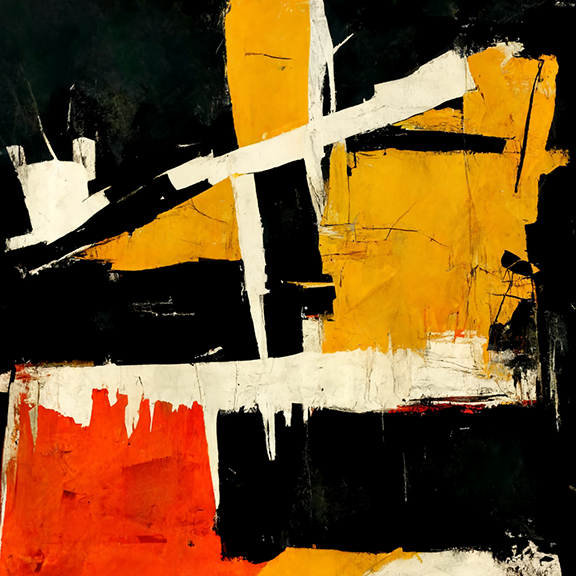
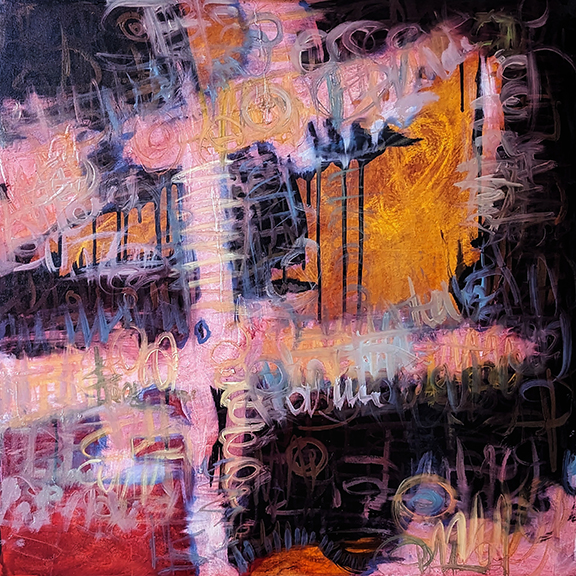
Today, what do you value most in your studio practice?
Time. I’m at a point in my life where I have all these creative juices flowing but not a lot of time. Like many of us artists we need another means to make money, so I have a full time job as a Packaging Designer. That pays my bills, and the leftover time is for my artwork and cats.
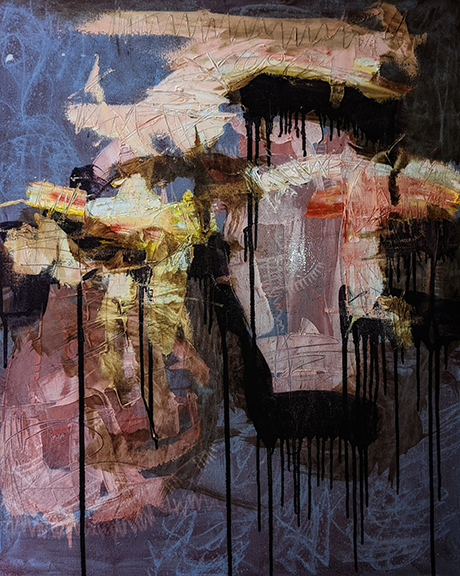
Aside from raising several kitties, can you expand upon what you are currently working upon? What are some items you hope to accomplish or investigate in 2023?
I’m currently working on a new series of paintings where I utilize A.I. to generate new compositions. For example, once I finished the painting “The Emergence of Reality #1” I uploaded the image to the Midjourney A.I. and it generated several variations. I plan on using these A.I. generated images to then complete the other 3 paintings.
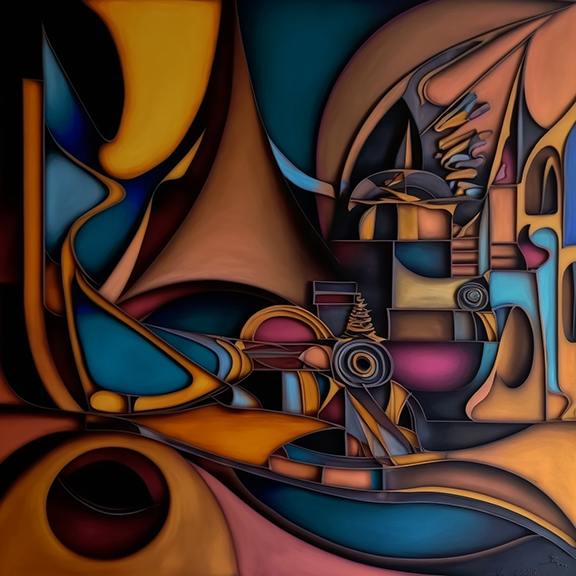
For additional information on the studio practice of Miguel Cortez, please visit:
Miguel Cortez – http://www.mcortez.com/
Miguel Cortez – https://miguelcortez.wordpress.com/about/
Miguel Cortez on Instagram – https://www.instagram.com/lapsus5/?hl=en
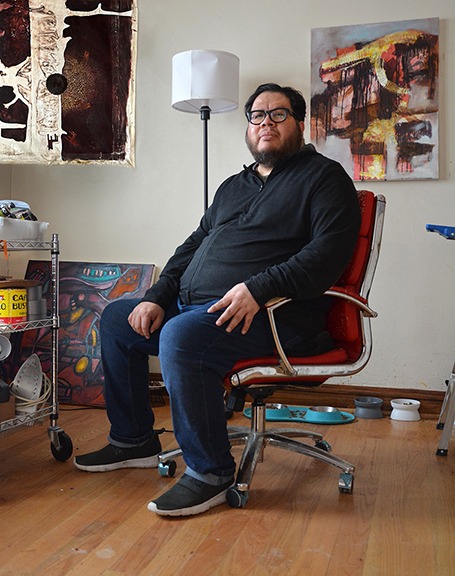
Artist interview and portrait by Chester Alamo-Costello


